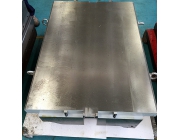

Longmen processing 02

Longmen processing 03

Longmen processing 04

Longmen processing 05

Longmen processing 06

Longmen processing 07

Longmen processing 08

Longmen processing 09

Longmen processing 01

Processing center of small proc

Processing center of small proc

Processing center of small proc

Processing center of small proc

Processing center of small proc

Processing center of small proc

Processing center of small proc


 as we all know, in real life. There are three forms of machining: general processing, precision machining and ultra precision machining. Ordinary processing refers to the precision of the general technical level. Precision machining refers to the precision that can be achieved through high precision machining tools or instruments and advanced processing techniques. Ultra precision machining means that the precision of the advanced machining technology must be finished by experiments, discussions and research. The precision indexes of each period are different, so the three forms of processing will change with time. The ultra precision machining technology is measured by the highest processing precision that can be achieved at every historical period. As long as it exceeds this standard, we can call these processing methods ultra precision machining technology. As far as the current standard is concerned, the machining precision of precision machining technology is 1 0.1um surface roughness of Ra0.2 1 0.01um, and the machining precision of ultra precision machining technology is higher than 0.1um, the surface roughness R is less than 0.25um, and the resolution and repeatability of the positioning precision of the machine tool are higher than that of 0.01um.
as we all know, in real life. There are three forms of machining: general processing, precision machining and ultra precision machining. Ordinary processing refers to the precision of the general technical level. Precision machining refers to the precision that can be achieved through high precision machining tools or instruments and advanced processing techniques. Ultra precision machining means that the precision of the advanced machining technology must be finished by experiments, discussions and research. The precision indexes of each period are different, so the three forms of processing will change with time. The ultra precision machining technology is measured by the highest processing precision that can be achieved at every historical period. As long as it exceeds this standard, we can call these processing methods ultra precision machining technology. As far as the current standard is concerned, the machining precision of precision machining technology is 1 0.1um surface roughness of Ra0.2 1 0.01um, and the machining precision of ultra precision machining technology is higher than 0.1um, the surface roughness R is less than 0.25um, and the resolution and repeatability of the positioning precision of the machine tool are higher than that of 0.01um. 